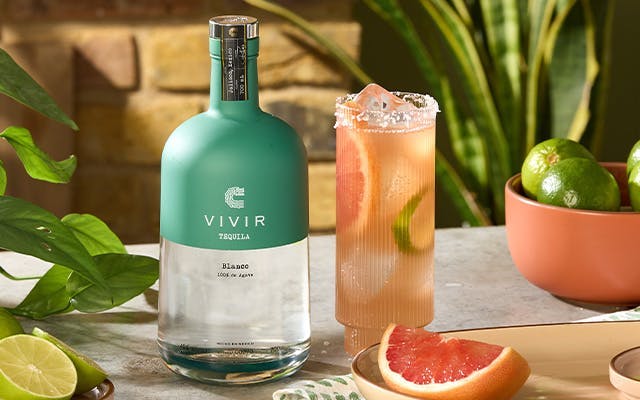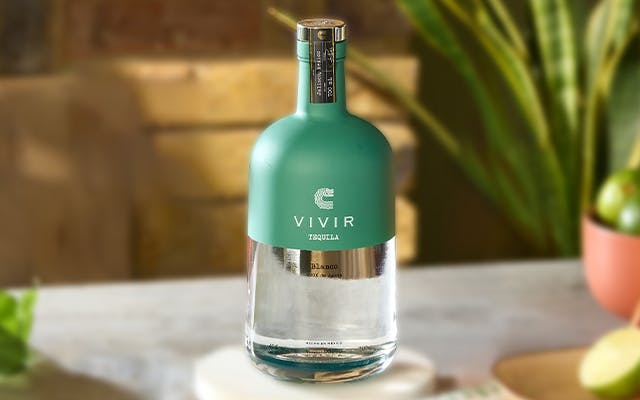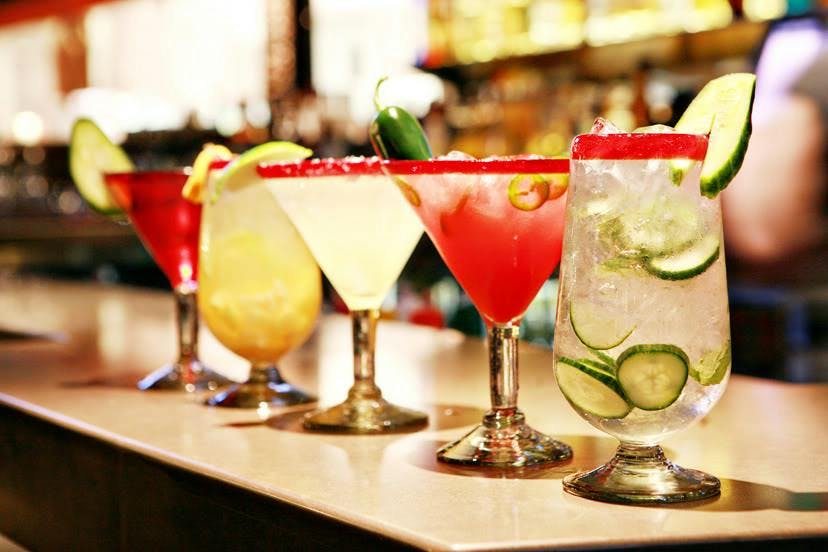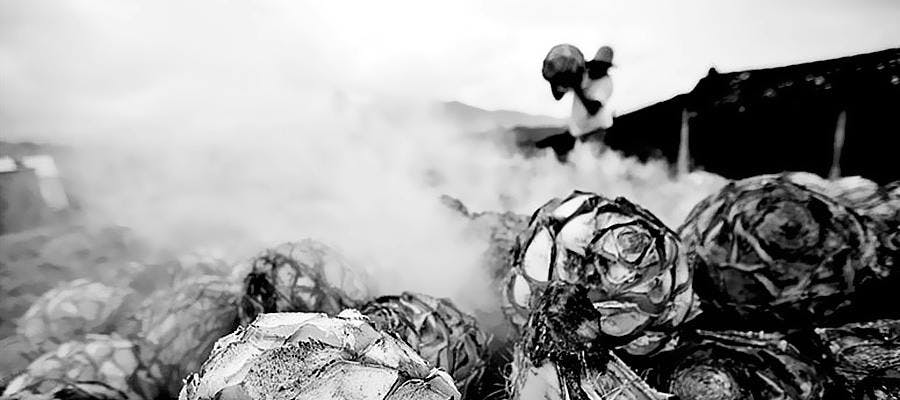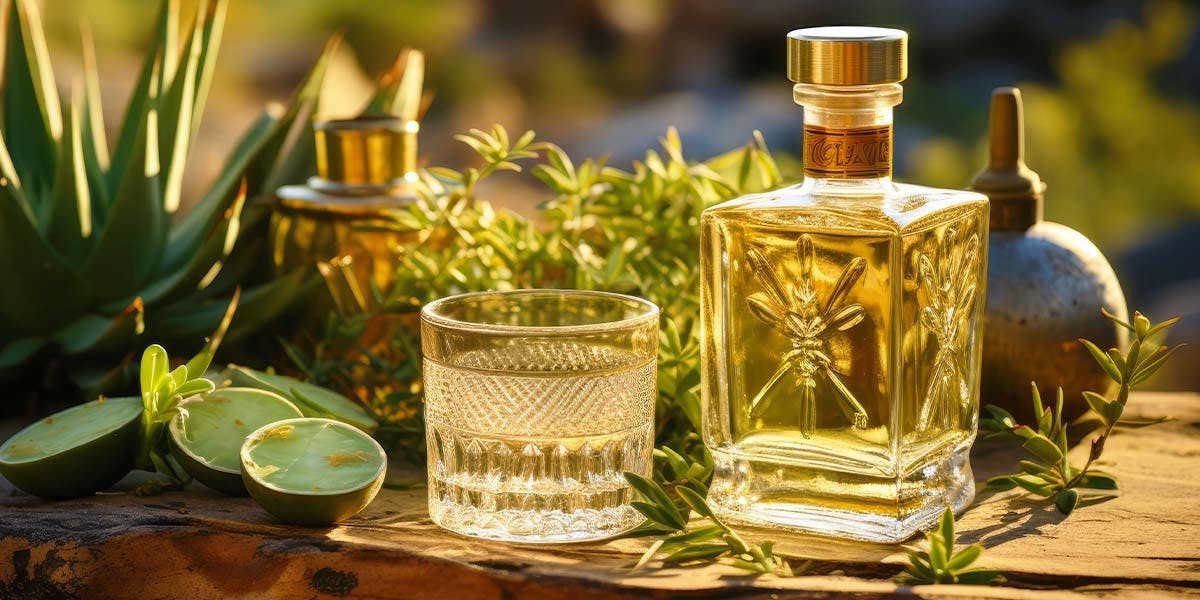
Everything you need to know about tequila...
Here at Craft Gin Club, we love tequila! In fact, we love it so much that we even created a special tequila box for Clubbers to enjoy (it sold out in 24 hours!).
So in this feature, we're taking a closer look at this fabulous spirit and finding out how it's made, where it comes from and even how to drink it.
This is your one-stop blog for all things tequila!
What is tequila?
Tequila is a distilled spirit made from blue agave, a succulent plant grown in Mexico.
There are some rules when it comes to calling a spirit "tequila". Not only must the spirit be made in Mexico using blue agave, but it must also have 35%-55% ABV (alcohol by volume).
Despite having to adhere to these strict requirements, the flavour of tequila can vary hugely depending on the region the agave is grown, be it highlands or lowlands, and by how long the distilled spirit is aged in oak casks.
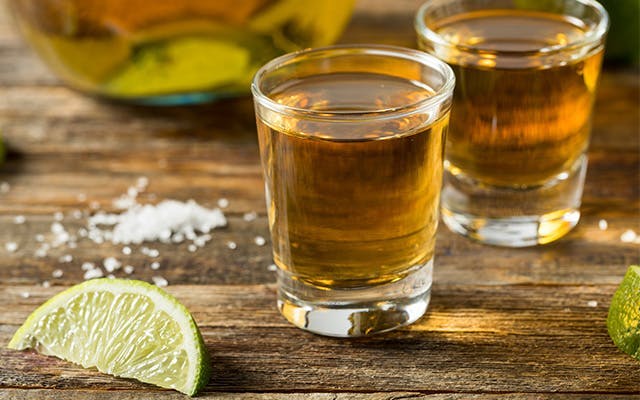
What does tequila taste like?
The flavour of tequila can vary depending on a number of factors, including where the agave it's made from is grown and how long it's aged.
However, there are some general flavour notes that you should expect to find in a tequila and they include a mix of earthy, sweet and herbaceous tones often accompanied by a fruitiness and hints of honey, oak, citrus, black pepper, caramel and vanilla.
Scroll down to find out how flavour can vary from one type of tequila to the next.
How is tequila made?
Tequila is made in 6 key stages:
- Harvesting the blue agave plant
- Shredding the heart of the blue agave (known as the "piña")
- Fermenting the juice from the piñas
- Distilling the spirit
- Ageing the tequila
- Bottling the tequila
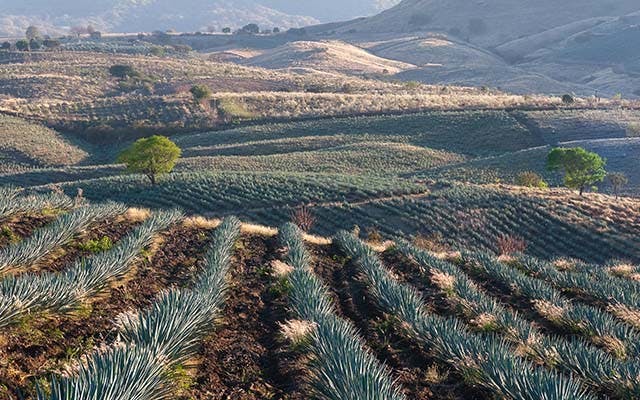
Each stage of the tequila-making process relies on the skills of the harvesters and distillers to make sure the product is the best it can be.
Here's what happens at each stage of tequila production...
Harvesting
The blue agave plant can only be harvested once it has reached maturity. This can take between 5 and 7 years, although for certain varieties it can take up to 12 years for the plant to reach full maturity.
Once maturity has been reached, the agave is harvested by highly skilled workers called "jimadores". The jimadores regularly trim the plants to stop them from flowering. This allows the agave to ripen fully.
The jimadores decide when the agave is ready for harvesting, which requires centuries-old expertise which is often passed down from generation to generation.
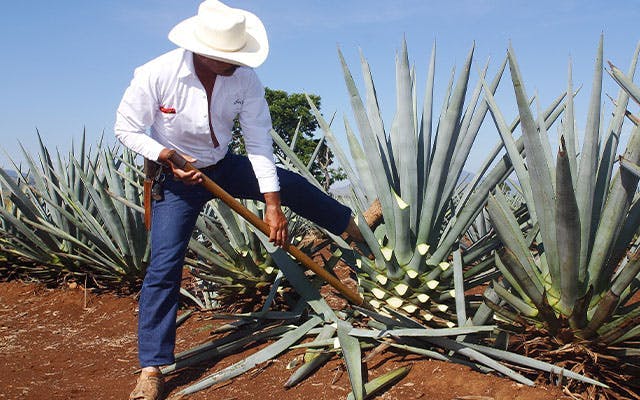
Shredding the piñas
Once the agave has been harvested, the jimadores use a special knife known as a ‘coa’ to cut away the spiky outer leaves to reveal the heart of the plant, known as the ‘piña’.
If this is done too late or too early and the plant isn't perfectly ripe, the piña won’t have the right amount of carbohydrates to complete fermentation in the next stage of production.
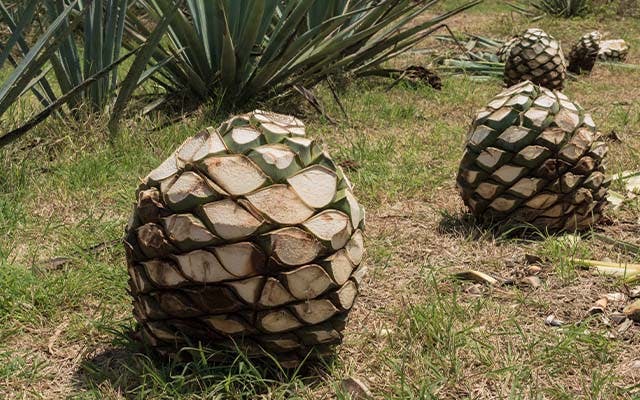
Fermenting
The piñas are then either slow roasted in ovens known as ‘hornos’ or pressure cooked in steam ovens known as ‘autoclaves’, where the starches are converted into sugars, ready for fermentation.
After being cooked, the piñas are pressed and their sugary water is fermented in tanks or vats with yeast to create the base alcohol.
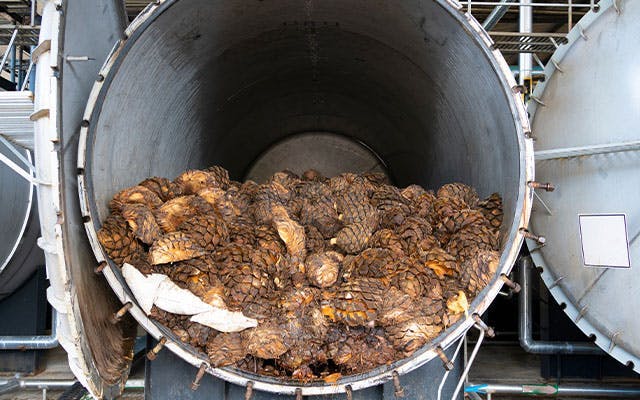
Distilling
The fermented base alcohol is distilled at least twice to clarify and concentrate the liquid.
The second distillation produces the clear silver tequila which is ready to be aged.
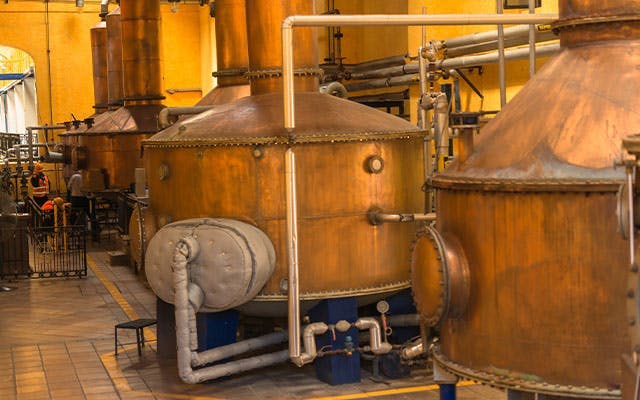
Ageing
Tequila is aged for different lengths of time depending on the desired variety of tequila the distiller wants to produce. All tequila is rested for between 14 to 21 days as standard. After that, it's up to the distiller how much more ageing they want to progress with.
Silver or "blanco" tequila is aged for up to 59 days in stainless steel vats to allow for oxidization.
Rested or "resposado" tequila is aged in white oak barrels for at least 2 months.
Aged or "añejo" tequila is aged in white oak barrels for at least 12 months.
Extra "añejo" tequila is aged for at least 3 years in the oak barrels.
Ageing the tequila in oak barrels not only changes the flavour of the liquid but the colour too. Barrel-aged tequila will have a golden colour, growing darker the longer the spirit is aged.
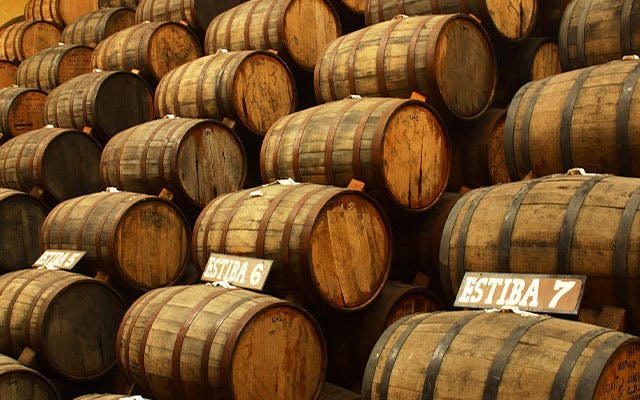
Bottling
After the right amount of ageing, the tequila is finally bottled and made ready to be sent out to tequila fans all over the world.
What are the different types of tequila?
There are 5 distinct types of tequila and they are:
Blanco Tequila
Blanco, also known as silver or white tequila, is the purest form of the spirit.
It is typically unaged or aged for a very short period (up to 59 days), preserving the clear appearance and allowing the essence of the agave plant to shine through.
Blanco tequila is known for its crisp, vibrant flavours, often featuring notes of citrus, pepper, and the distinctive earthy undertones of agave.
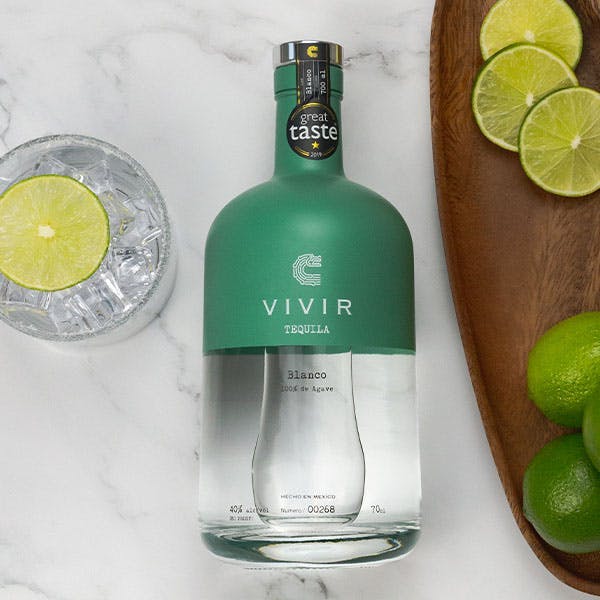
Reposado Tequila
Reposado, meaning "rested" in Spanish, undergoes a short ageing process, typically resting in oak barrels for a minimum of two months but less than a year.
This ageing imparts a subtle golden hue to the tequila and adds complexity to the flavour profile.
Reposado tequilas often exhibit a balance of the agave’s sweetness with hints of vanilla, caramel, and a mellow woodiness from the barrel ageing.
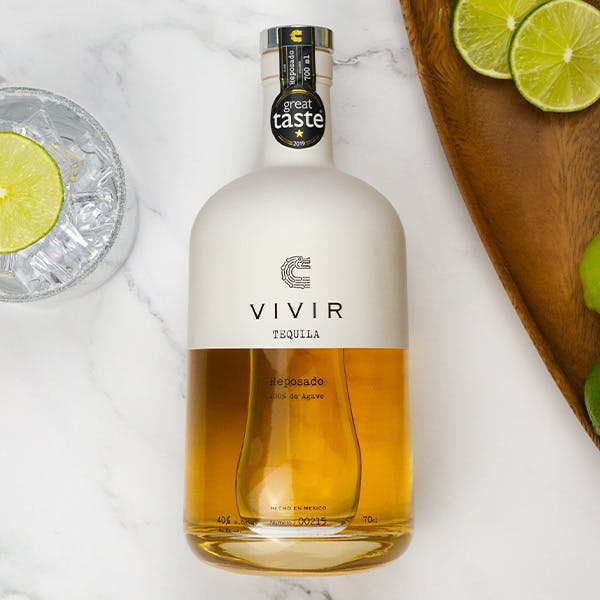
Añejo Tequila
Añejo tequila, meaning "aged" in Spanish, is aged for a more extended period, typically between one to three years in oak barrels.
This prolonged ageing process results in a rich, amber colour and a more nuanced and sophisticated flavour profile.
Añejo tequilas showcase notes of oak, chocolate, and dried fruit, with a smooth and velvety texture. The ageing process imparts a level of complexity that is appreciated by those who enjoy sipping tequila.
Extra Añejo Tequila
Extra Añejo represents the longest ageing category, with tequilas aged for more than three years in oak barrels.
This extended maturation imparts a deep, mahogany colour and an exceptionally smooth and complex flavour profile.
Extra Añejo tequilas often exhibit characteristics similar to aged spirits like whisky or brandy, with notes of toffee, caramel and refined agave sweetness.
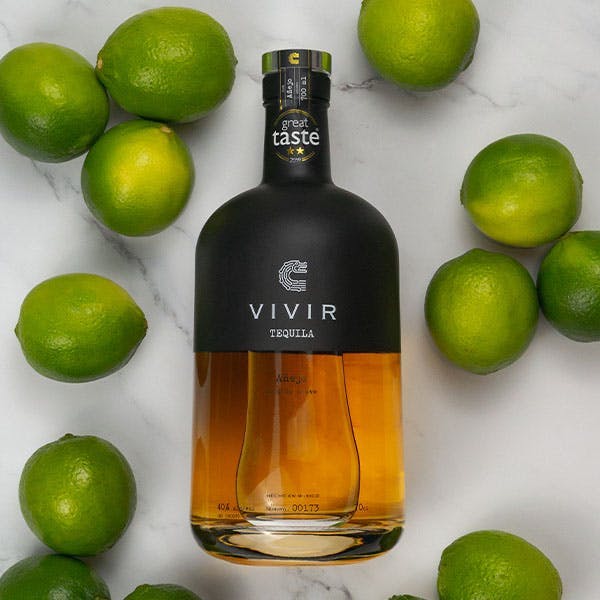
"Joven" or Gold Tequila
Joven ("young" in Spanish), sometimes referred to as Gold, is a blended tequila that combines unaged blanco with a small amount of aged tequila.
The ageing process adds a touch of colour and complexity, creating a spirit that lies between the youthful vibrancy of Blanco and the more mature characteristics of Reposado or Añejo.
Joven tequilas can vary widely in flavour, offering a versatile option for both sipping and mixing in cocktails.
Whether you’re sticking to straight serves or a fan of colourful cocktails, there are no rules around drinking tequila. We encourage you to try your favourite spirit in as many different ways as possible to find your favourite!
Where does tequila come from?
Tequila can only be produced in five Mexican states.
Jalisco, where the town of Tequila can be found, is the biggest producer of tequila.
The other tequila regions are Tamaulipas, Guanajuato, Nayarit and Michoacan.
To be named "Tequila", the spirit must come from one of these five areas.
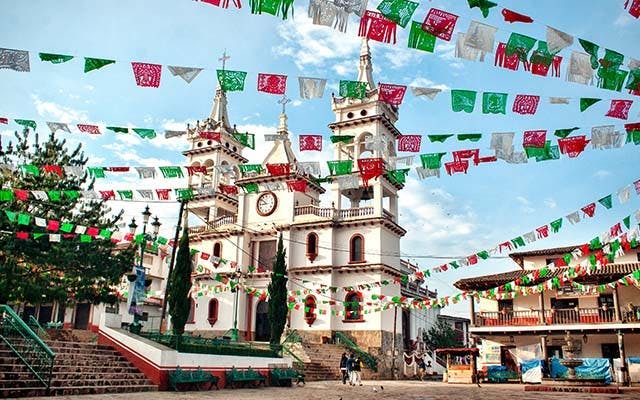
Is vodka stronger than tequila?
Most available vodkas are around 40% ABV (some can get as high as 90% ABV).
In Europe, tequila can only be sold at a minimum of 38% ABV. In America, the minimum is 40% ABV and in Mexico it's a minimum of 35% ABV.
Therefore, most vodkas and tequilas on supermarket shelves will be around the same strength, with vodka being slightly stronger on average.
Can tequila go bad?
Because of its high alcohol content, tequila will not go bad. However, its quality can decline over time if not stored properly or left open and exposed to air for too long.
How to store tequila:
Tequila should be stored with the bottle standing upright in a cool, dark place away from any direct sunlight or heat source.
This is because heat and sunlight can deteriorate the quality of the liquid over time.
Which tequila is best?
The topic of which tequila is best is hugely subjective - it's completely down to personal taste.
There are certainly some hugely popular tequilas out there, like 818 Tequila, Patrón Tequila and Don Julio Tequila.
And celebrity-owned tequila brands like Casamigos (owned by George Clooney) and Mana (owned by Dwayne Johnson AKA The Rock) get lots of media attention.
However, one of our favourite tequilas here at Craft Gin Club has to be VIVIR Tequila Blanco - our experts made it the star of Craft Gin Club's Tequila Box because it is a magnificent example of how great tequila can be.
How should you drink tequila?
In Mexico, it’s most common for tequila to be drunk neat, without the lime and salt that we’re so used to.
We recommend trying your tequila lightly chilled, served in a glass that allows the aromas to develop, such as a flute, a goblet or a rocks glass.
Once you have tried your tequila neat, we recommend trying tequila with some of the mixer suggestions below and in fabulous tequila cocktail recipes (scroll down to find some of our favourites).
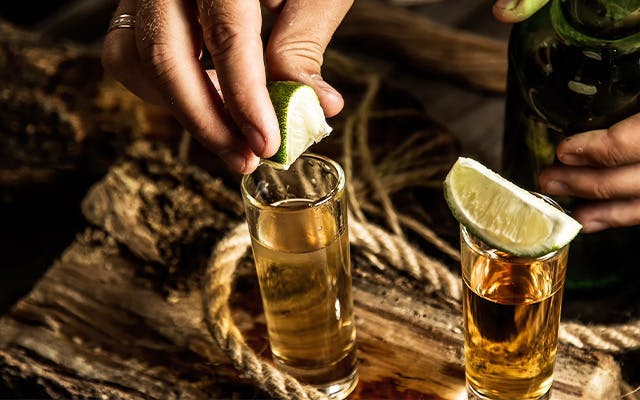
What do you mix with tequila?
Tequila is a surprisingly versatile spirit that can work well with a number of different mixers.
Try soda water for a simple spritz-style drink, or a citrus juice like orange or grapefruit for a dose of fruity flavour.
Tropical flavours like pineapple juice, coconut water and watermelon also go well with tequila, depending on the brand.
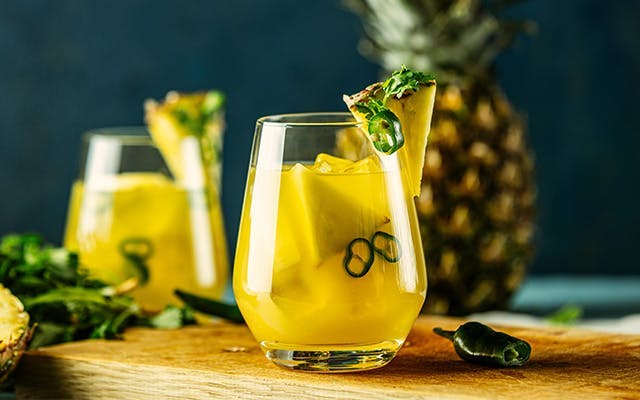
Tequila cocktails
You’ll be familiar with the classic Margarita, but there’s a whole world of tequila tipples out there to explore.
Margaritas come in all shapes and sizes; spicy, frozen, fruity or using aged tequila for a richer flavour.
If tart but sweet grapefruit is your thing, opt for a pale pastel Paloma cocktail.
For a revamped classic, try a Tequila Sour or stick to the favourites with a Tequila Sunrise.
For a dose of spicy ginger flavour, mix up a refreshing Mexican Mule.
